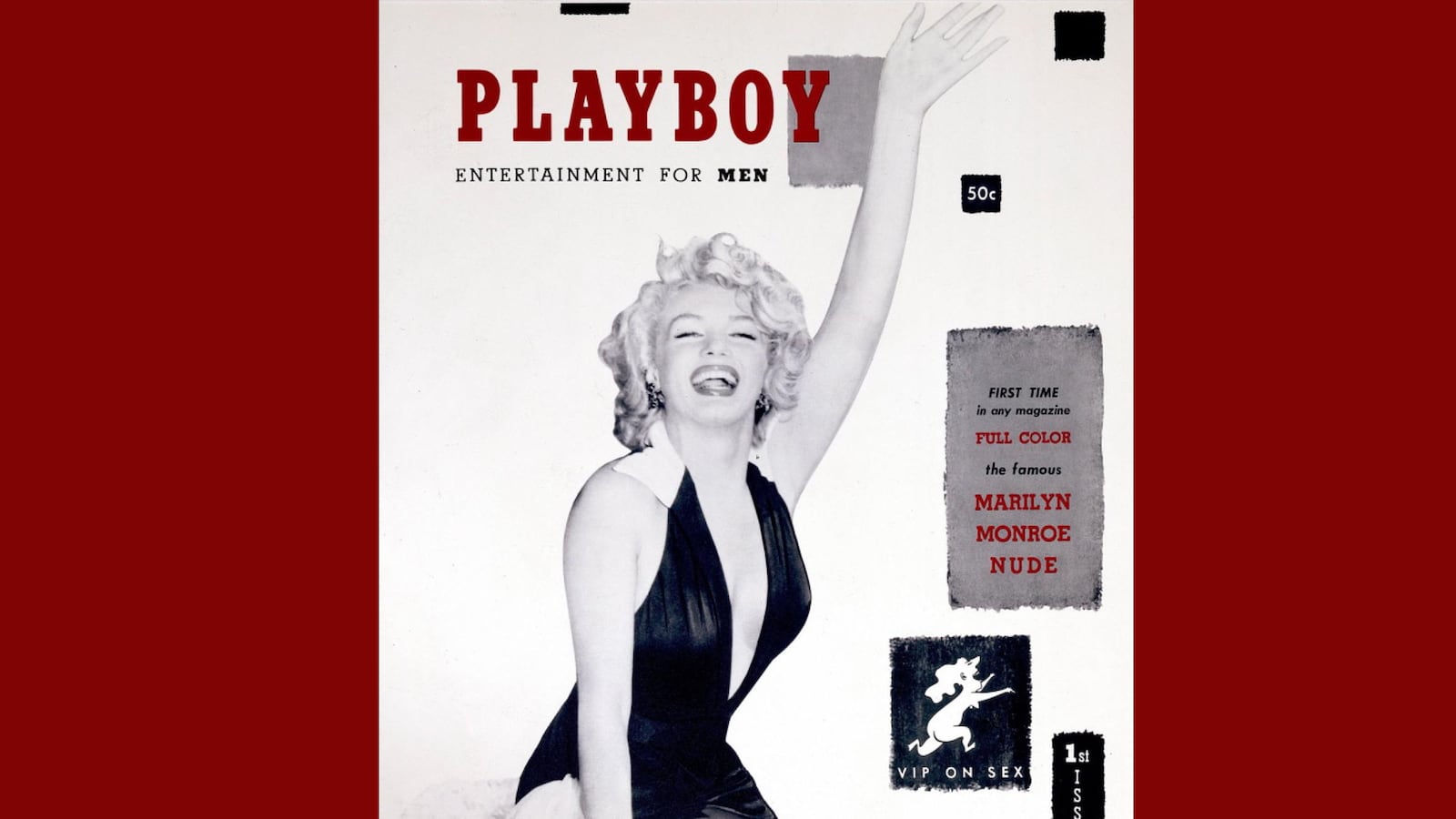It’s hard to feel nostalgic for masturbation fodder, but it’s hard not to feel a bit wistful at Playboy’s announcement that it would no longer publish nude images.
As reported in The New York Times, Playboy’s decision to scrap nudie-cuties is part of the redesign, which is set to premiere next March.

Granted, it is hard to spare too much sympathy for a practice that commercially sanctioned the sexual objectification of women (and as cute, fluffy non-human creatures no less). But, it still feels like the end of an era—and, perversely, a more wholesome one at that.
Playboy, the most iconic source of American porn, was beaten by the simple business strategy that had led to its own success: sex sells.
Sex still certainly sells, but the bar for bankable, marketable sex has been raised to Olympic pole-vaulting levels thanks to the widely available (read: free) hardcore porn online.
Photos of buxom blondes and even centerfolds revealing full-bush or bald eagle genitalia (depending on the year), simply cannot hold a candle to clips of a man ejaculating all over a woman’s face or a good old DP (double penetration) scene.
Oh, did we mention these latter, more graphic ones tend to be free?
In an ironic twist, sex has killed the iconic Playboy centerfold. By its own admission, the one-eyed snake has eaten its own tail.
“You’re now one click away from every sex act imaginable for free,” Playboy CEO Scott Flanders told the Times. “And so it’s just passé at this juncture.”
As with the Playboy empire and its nude spreads, the product has become so synonymous with the brand that it’s mentally difficult to conceive of the latter continuing to exist without the former.
Certainly, the magazine wasn’t, and isn’t, all about the nudes. The presumably sticky pages have carried fabulous writing by Norman Mailer, Nora Ephron, Margaret Atwood and interviews with Jimmy Carter and Martin Luther King Jr.
Still, the naked photos was how Playboy made its name. Its first issue hit stands December 1953 with a cover that prominently promises nude photos of Marilyn Monroe in “FULL COLOR.”
That issue also included a brief manifesto explaining who was a Playboy reader—“a man between the ages of 18 and 80”—and who was not: “If you’re somebody’s sister, wife, mother-on-law and picked us up by mistake, please pass us along to the man in your life and get back to your Ladies Home Companion.”
It suffices to say from that charmingly patronizing message that all little ladies should avert their eyes and brains, Playboy earned its share of feminist critiques.
Gloria Steinem famously exposed (PDF) the grueling, gropey life of a bunny at the Playboy Club in 1963.
Feminist Susan Brownmiller and Sally Kempton raked Hefner over the coals on The Dick Cavett Show.
Kempton said “Hugh Hefner is my enemy.”
Psychologist Peggy Drexler slammed Playboy’s 60th anniversary issue featuring Kate Moss as the classic bunny in Time as “belittling, and dismissive, and plainly outdated.”
For all these reasons, if you specifically cared about “respectable” reading material, you probably focused your eyes and dollars elsewhere.
“I read Playboy for the articles” became the classiest and yet most transparent cover for jerking off for a reason. Men relied on that excuse to justify decades of spankbank shots, spanning from Bettie Page to Carmen Electra to Lindsay Lohan.
The reason Playboy could boast 5.6 million in circulation in 1975 was because of the T&A.
Indeed, that’s what made Playboy a publishing pioneer that inspired several competitive copiers. Imitators came fast and hard (pun intended). Penthouse (1965) and Hustler (1974) magazines were one thing—soft-porn rivals on newsstands were beatable. The advent of the Internet—and, five seconds later, the advent of Internet porn—posed a far more extreme threat that has come to fruition.
Playboy has been beaten (off) by online porn.
Forty years later, Playboy has fallen in circulation to 800,000. Flanders told the Times that the U.S. edition hemorrhages $3 million a year.
The brand’s in-between, relatively tame version of sex doesn’t appeal to those seeking more full-on carnal pleasure, so the brand will have to appeal to other parts of its readers’ anatomy to survive.
Playboy is hardly the first print standby to try to revamp but toning down the sex.
Maxim has earned acclaim under new editor-in-chief Kate Lamphear’s helm, making its famous “Hot 100” more brainy than boobilicious.
Cosmopolitan has done an analogous revamp under Joanna Coles. The sex is still there, but the voice is more clever and less sexist and patronizing.
There are fewer tips about blow jobs and more about how boring it is to give a handjob.
Some smaller magazines that skew more toward erotica, like New York’s Adult, Paris’s Irène, and Rotterdam’s Extra Extra, are gaining attention. But it’s hard to put them in the same box as Playboy.
As The New York Times reported this year, this latter genre is about “blending nudity with art, fashion and philosophy” and charging “a premium—often more than $20—to thousands of people, or tens of thousands, rather than millions.”
Meanwhile, Playboy’s print porn contemporaries are unable to get it up, so to speak.
Last year, Hustler was barely selling 100,000 issues a month and its famous founder, Larry Flynt, told CBS Sunday Morning “I don’t think Hustler will exist another two or three years from now.” Penthouse went bankrupt in 2003 and its next publisher, FriendFinder, filed for Chapter 11 bankruptcy in 2013.
Considering the state of modern pornography, it’s unclear whether anyone will weep over the loss of Playboy nudes, but the last issue featuring them will surely still require a lot of tissues.
For your tears, obviously.




